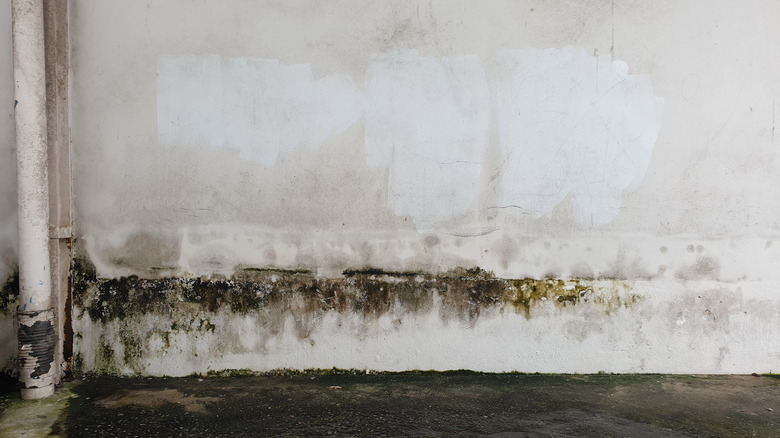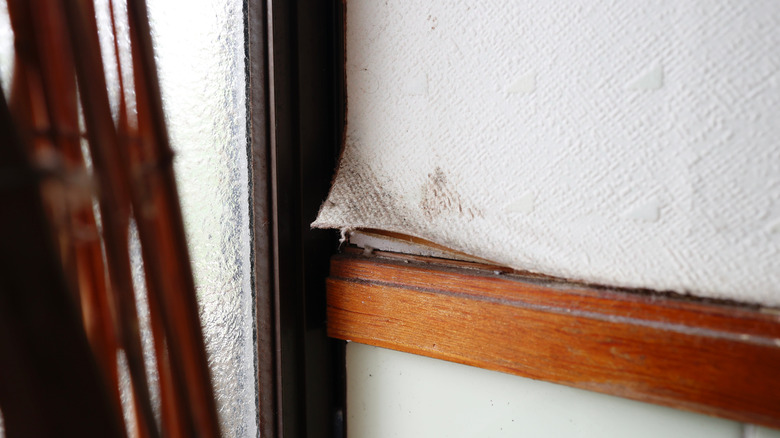3 Signs There's Hidden Water Damage In Your Home's Walls
Water damage refers to the breaking down and weakening of a home's interior structure due to the presence of rogue water. If you have experienced severe weather that caused lots of rain and winds in your area, it's possible that your building has water damage. Leaking pipes, faulty sewage systems, clogged gutters, and old or damaged home appliances can also lead to this unsightly and rather expensive problem.
While 4 in 10 homeowners are reported to have suffered some loss due to water damage, about 90% of the number say the harm could have been averted, via All Dry USA (ADU). ADU advises doing what you can to prevent water damage by regularly inspecting places where a lot of water passes, like pipes, plumbing systems, bathrooms, roofs, and gutters. If you've already experienced some of the causes, however, and have reason to suspect that something wrong, here are some signs of water damage in your home's walls.
1. Musty smells
When a significant amount of moisture is trapped, it can create a musty smell. This scent is often described as an earthy, unpleasant odor like decaying vegetables or greenery, explains Wawanesa Insurance. This can result from things like clogged gutters and damaged appliance connections because they lead to water damage at the bottom of your house — a rich area for mold to form, via Plumb Time Plumbing & Drain Services. Mold does not always accompany musty smells, though, so you don't have to see it before you know that there is water damage.
When you notice a strong odor, try to locate the source and see if you can get rid of whatever is causing it because it can affect your health. It's not enough to try and cover up the smell. If you suspect water damage but don't smell anything, you may have just gotten used to it. Wawanesa Insurance advises getting someone that doesn't live in your home to smell the area.
2. Visible stains
This is usually a result of mold because it shows up in various colors. If you notice round spots that are black, green, brown, or other dark colors, it's a sign of hidden water damage on your walls. The stains can also be more of a discoloration that appears in big patches of yellow or brown. If you suspect water damage in the basement, watch out for efflorescence on the concrete. This refers to chalk-like stains that are actually salt deposits left on the wall or floor when the water evaporates, via ALLCON Group. Efflorescence is usually white but can also appear in other colors.
Don't try to cover up the stains with paint because it may be pointing to a leak behind the walls, says Reynolds Restoration Services. If the cause is water damage, the new coat of paint will also be destroyed. Just like with the odors, get to the root of the problem and eliminate it!
3. Peeling paint or wallpaper
When too much moisture is trapped in your walls due to a leak from the roof or heavy rain, it tries to get out, and you can notice it when your paint or wallpaper starts to peel suddenly. This is because water affects their ability to stick to the walls, says Reynolds Restoration Services. This can also lead to swelling and a general weakening of the structure of your walls, so the cause needs to be tackled as soon as you notice it.
After fixing the issue in the walls, you need to determine if the exterior damage was only to the paint or if you also need to replace the drywall, via PuroClean. Has the drywall that's behind the paint become swollen or softened? Then the damaged sections need to be cut out and filled in with new, water-resistant drywall. Glidden recommends glossy paint that has been created for high-humidity areas. When choosing new wallpaper, Wallpaper Boulevard recommends solid vinyl because it can withstand high-moisture levels in the air.



